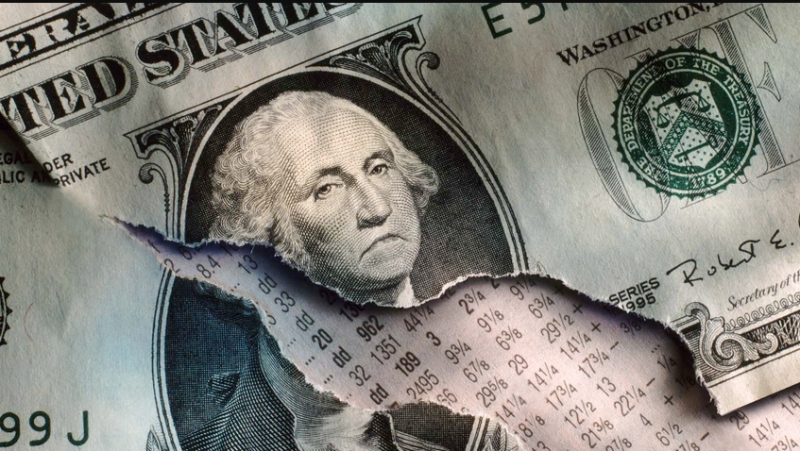
Washington: The Federal Reserve's anti-inflationists have been tightening their hold on the American economy for more than a year with nine straight interest rate increases. One important objective has been to reduce the rapid hiring rate in order to reduce price pressures. The labour market has so far resisted breaking.
Forecasters were surprised by how strong hiring was in both January and February. The unemployment rate is only just above historic lows.
However, recent economic indicators are increasingly pointing to the possibility of an impending economic slowdown. Less job openings are being posted by employers. More people are waiting in line to receive unemployment benefits. Manufacturers are pulling back.
Trade between America and the rest of the world is declining. Additionally, even though businesses like eateries, shops, and other services are still expanding, it is happening more gradually.
According to Christopher Rupkey, chief economist at the research firm FWDBONDS LLC, "the economic data seem to show the economy slowing down dramatically in the first quarter of 2023, bolstering the hopes of Fed officials that less demand will somehow bring inflation down.
The government will announce on Friday morning whether the recent signs of weakness have finally prompted hiring managers to start a retreat. According to a survey of economists conducted by the data company FactSet, the Labor Department is anticipated to report that employers added 240,000 jobs in March.
The number of jobs would have decreased from 311,000 in February and 504,000 in January. But it would probably still be too much for the Fed, which might decide that additional interest rate increases are required because the pace of hiring is still driving up wages and prices.
Also Read: RBI developing online portal for unclaimed deposits of all banks
The Fed's top priority is to control inflation. When consumer prices began to rise in the spring of 2021, they were slow to act, assuming that it was only a temporary effect of supply bottlenecks brought on by the economy's surprisingly rapid recovery from the pandemic recession.
The Fed started gradually raising its benchmark rate from near zero only in March 2022. However, in order to combat the worst inflation wave since the 1980s, it has raised rates more aggressively than it had previously.
In addition, as borrowing costs increased, inflation gradually decreased. Consumer inflation is currently running at 6%, which is significantly lower than the 9.1% rate it peaked at in June of last year. However, it remains well above the Fed's 2% target.
The financial system's instability makes things more difficult. In March, two significant American banks failed, and rising interest rates and more stringent credit requirements could further weaken banks and reduce borrowing and spending by individuals and businesses.
In order to achieve a "soft landing," the Fed must slow growth just enough to control inflation without sending the world's largest economy into a downturn. The majority of economists don't think it will succeed; they anticipate a recession later this year.
The economy has so far shown itself to be resilient in the face of rising borrowing costs. In the second half of 2022, the United States' gross domestic product—the total output of goods and services—grew at a brisk rate. However, recent data indicate that the economy is lagging behind.
Manufacturing activity in the United States decreased in March for the fifth consecutive month, according to a report released on Monday by the Institute for Supply Management, an association of purchasing managers. Two days later, the ISM reported that growth in the services sector, which makes up the vast majority of employment in the United States, had sharply slowed in December.
The Commerce Department announced on Wednesday that both U.S. exports and imports decreased in February, providing yet another indication of the weakening state of the world economy.
On Thursday, the Labor Department announced that it had modified the formula it uses to determine how many Americans are applying for unemployment benefits. The adjustment increased claims by almost 100,000 over the course of the previous two weeks, which may help to explain why significant layoffs in the tech sector this year have not yet appeared on the unemployment rolls.
According to a separate report released this week by the Labor Department, employers announced 9.9 million job openings in February, the fewest since May 2021 but still significantly higher than anything seen prior to 2021.
The Fed has expressed hope that employers will ease wage pressures by advertising fewer vacancies rather than by eliminating many existing jobs in its quest for a soft landing. The Fed also anticipates that more people will begin looking for work, increasing the labour pool and easing pressure on businesses to raise wages.
When more people look for jobs but are unsuccessful in doing so right away, the unemployment rate may rise. This is so that the number of unemployed people can only include those who are actively seeking employment.
"A rise in payrolls close to (200,000), a modest uptick in the unemployment rate — on a rise in the civilian labour force — and a deceleration in average hourly earnings would be a 'Goldilocks' scenario from the Fed's perspective," said Rubeela Farooqi, chief U.S. economist at High Frequency Economics.
Also Read: Swiss banks were at risk of a "full-scale" deposit run
According to Farooqi, it would show "that the threat from wages to inflation is lessening."
She added that a March hiring increase closer to 300,000 would indicate that the Fed needs to take additional action to combat inflation.
We really lack a reliable method to predict how the labour market will change in response to tighter monetary policy, "Farooqi declared. "We have long anticipated an easing of labour market conditions. Maybe that is about to happen."